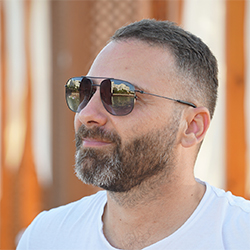13 Amazing Movies Filmed in Crete and Greece
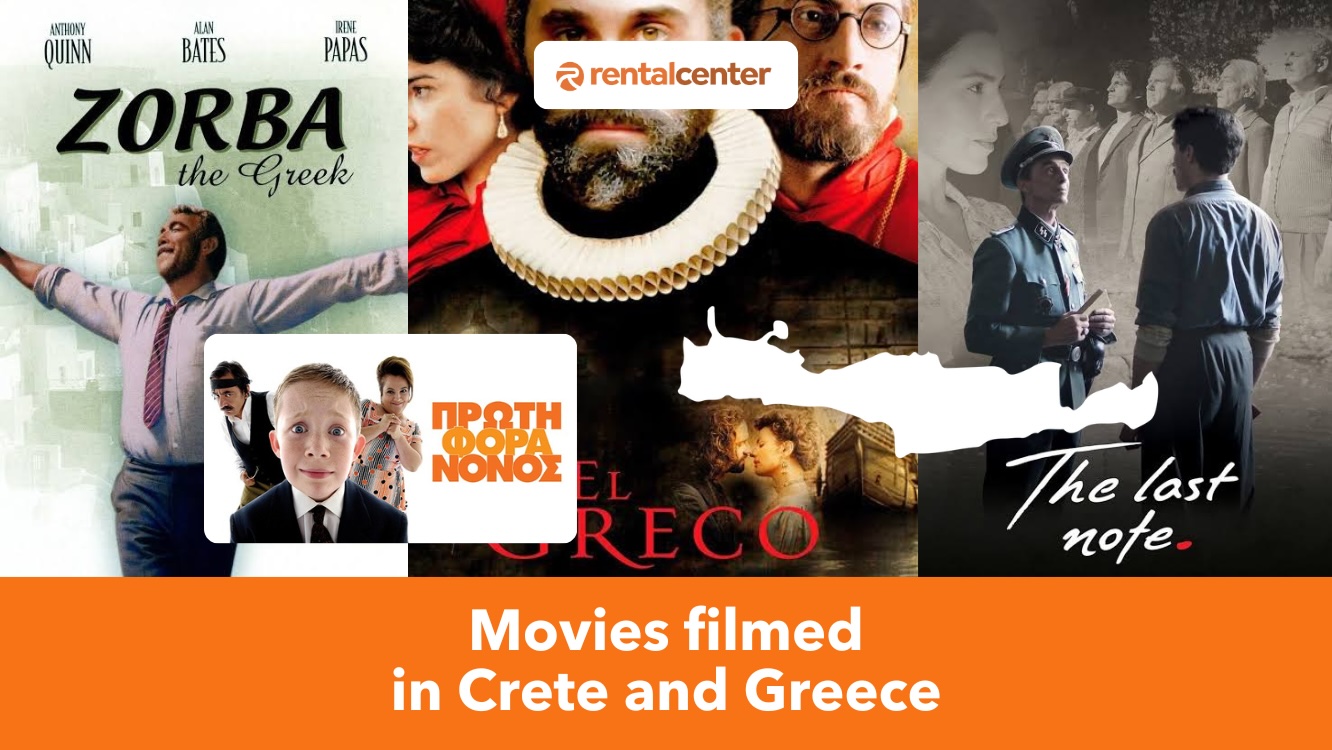
Crete has long served as an attractive film location due to its diverse landscapes, cultural heritage, and supportive production environment. Numerous international and Greek movies have been filmed across the island, making use of its beaches, mountains, historic fortresses, and ancient ruins. The accessible transport links, mild weather, tax incentives, and skilled crews make it ideal for year-round filmmaking. Visitors can easily explore iconic filming spots—like Stavros Beach, where Zorba’s famous Syrtaki dance was filmed, or the ruins of Knossos, featured in international productions.
Here is the list of movies filmed in Crete and Greece:
- The 11th Day: Crete 1941: The 11th Day: Crete 1941 (2005) was filmed at various historical locations across Crete, focusing on key sites tied to the Cretan resistance during World War II. The documentary features Patrick Leigh Fermor, William Stanley Moss, and George Tzitzikas, recounting the heroic efforts of civilians and British operatives against Nazi occupation. It has an IMDb rating of 8.3/10.
- The Moon-Spinners: The Moon-Spinners (1964) was filmed in locations on Crete, including Elounda, Agios Nikolaos, Ierapetra, and Kritsa. This Disney mystery-adventure stars Hayley Mills, Eli Wallach, Pola Negri (in her final screen performance), and Peter McEnery. It combines romance and the backdrop of Crete and holds an IMDb rating of 6.5/10.
- The Two Faces of January: The Two Faces of January (2014) was shot in Chalepa (Chania), Heraklion, and the ruins of Knossos on Crete. This psychological thriller stars Viggo Mortensen, Kirsten Dunst, and Oscar Isaac as characters entangled in betrayal and murder while fleeing through Greece. The film has an IMDb rating of 6.2/10.
- Zorba the Greek: Zorba the Greek (1964) was filmed in several locations on Crete, including Stavros Beach, Chania, Kokkino Chorio, and the Akrotiri Peninsula. The iconic Syrtaki dance scene was shot at Stavros Beach. The film stars Anthony Quinn, Alan Bates, Irene Papas, and Lila Kedrova, who won an Oscar for her performance. It has an IMDb rating of 7.6/10.
- Days of ’36: Days of ’36 (1972) was filmed in a former Turkish fort in Crete and Greece, where communist political prisoners were once held and tortured. Directed by Theo Angelopoulos, this political drama stars Vangelis Kazan, Kostas Pavlou, and Thanos Grammenos. The film has an IMDb rating of 6.9/10.
- The Last Note: The Last Note (2017) was filmed in Crete and is based on the execution of 200 Greek resistance fighters by German occupiers during World War II. It was directed by Pantelis Voulgaris and stars Andreas Konstantinou, André Hennicke, and Melia Kreiling. The film has an IMDb rating of 7.6/10.
- He Who Must Die: He Who Must Die (1957) was filmed in Kritsa, one of Crete’s oldest villages, and is based on Nikos Kazantzakis’ novel Christ Recrucified. Directed by Jules Dassin, the film tells the story of a Greek village organizing a Passion Play political and social turmoil. The cast includes Jean Servais, Carl Möhner, Grégoire Aslan, Gert Fröbe, and Melina Mercouri. It has an IMDb rating of 7.5/10.
- Proti Fora Nonos: Proti Fora Nonos (2007), also known as Little Greek Godfather, was filmed in Crete and follows an 11-year-old boy sent to baptize a child on the island while navigating local customs and family expectations. Directed by Olga Malea, it stars Antonis Kafetzopoulos, Eleni Kastani, and Tex Pardue. The movie has an IMDb rating of 5.4/10.
- Summer Lovers: Summer Lovers (1982) features Crete as one of its filming locations alongside Santorini and Mykonos. This romantic drama follows a young American couple and a French archaeologist who form a love triangle while exploring Greek island life. Directed by Randal Kleiser, it stars Peter Gallagher, Daryl Hannah, and Valérie Quennessen. The film has an IMDb rating of 5.8/10.
- God Loves Caviar: God Loves Caviar (2012) was filmed in Crete and other locations. It depicts the life of Ioannis Varvakis, a Greek pirate who became a caviar merchant and philanthropist. Directed by Yannis Smaragdis, the film stars Sebastian Koch, Catherine Deneuve, John Cleese, and Olga Sutulova. It has an IMDb rating of 5.8/10.
- 22 Bullets: 22 Bullets (2010), while set in France, includes some scenes filmed in Crete. This crime thriller follows a retired mobster seeking revenge after surviving an assassination attempt. Directed by Richard Berry, it stars Jean Reno, Kad Merad, and Marina Foïs. The film holds an IMDb rating of 6.6/10.
- El Greco: El Greco (2007) was filmed in Heraklion, Crete, Rhodes, and Spain. It tells the story of Domenicos Theotokopoulos (El Greco), a Cretan artist who rose to fame during the Renaissance. Directed by Yannis Smaragdis, it stars Nick Ashdon, Juan Diego Botto, and Lakis Lazopoulos. The film has an IMDb rating of 7.0/10.
- The Inbetweeners Movie: The Inbetweeners Movie (2011) was set in Malia, Crete, though much of the filming took place in Magaluf, Spain. This comedy follows four British teenagers on a chaotic holiday after finishing school. Directed by Ben Palmer, it stars Simon Bird, James Buckley, Blake Harrison, and Joe Thomas. The movie has an IMDb rating of 6.7/10.
1. The 11th Day: Crete 1941 (2005)
The 2005 documentary The 11th Day: Crete 1941, directed by Christos Epperson and written by Michael Epperson, recounts the Cretan civilian resistance against Nazi occupation during World War II. It spans 1941 to 1945, and it highlights the courage and sacrifices of Crete’s men, women, and children, alongside the British SOE operatives who aided them.
Patrick Leigh Fermor, a British SOE operative pivotal to the Cretan resistance, is a central figure of The 11th Day: Crete 1941. His involvement in the famous abduction of German General Heinrich Kreipe is prominently featured. Other participants include George Tzitzikas, a local resistance hero, CIA historian Chase Brandon, and Professor Andre Gerolymatos, offering expert commentary.
Filmed on location in Crete, with sites like Chania and key resistance locations featured, The 11th Day: Crete 1941 documentary used authentic uniforms, weapons, and artifacts to ensure accuracy. Reenactments included Tyler Pawson as Billy Stanley Moss. Additional footage was shot in Northern California to complement the production. The 11th Day: Crete 1941 combines interviews, reenactments, and expert commentary. Completed in 2005 after principal photography began in 2001, the film has an IMDb score of 8.3/10.
2. The Moon-Spinners film (1964)
The Moon-Spinners is a 1964 mystery-adventure film produced by Walt Disney Productions and directed by James Neilson. Adapted from Mary Stewart’s 1962 suspense novel, it follows Nikky Ferris, a young Englishwoman, who becomes entangled in a romantic and dangerous adventure involving stolen jewels while vacationing in Crete. The film marked Hayley Mills’ fifth Disney role and featured Pola Negri in her final screen performance.
The Moon-Spinners was shot extensively in Crete, including the town of Elounda near Agios Nikolaos, where the fictional Moon-Spinners Inn was set. Key scenes were filmed at the Vritomartes Taverna, the Panagia Kera Church in Kritsa (where Nikky discovers Mark wounded), and the Olous Archaeological Site, with its windmills appearing in the opening credits. Interior scenes were completed at Pinewood Studios in England.
Principal photography of Moon-Spinners began on September 10, 1963, in Crete and wrapped in November. Studio work at Pinewood continued through January 1964. Hayley Mills stars as Nikky Ferris, delivering a performance marked by charm and optimism. She is joined by Peter McEnery as Mark Camford, Nikky’s romantic interest; Eli Wallach as Stratos, the jewel thief; Joan Greenwood as Aunt Frances; and Irene Papas as Sophia. Pola Negri makes her final screen appearance as Madame Habib.
On IMDb, The Moon-Spinners holds a score of 6.5/10, based on over 3,100 user ratings. Though unrated on Rotten Tomatoes, it remains a beloved classic among fans of Hayley Mills and Disney’s live-action films of the era.
3. The Two Faces of January (2014)
The Two Faces of January is a 2014 psychological thriller written and directed by Hossein Amini, based on Patricia Highsmith’s 1964 novel. The film follows Chester MacFarland, a con artist; his wife, Colette; and Rydal Keener, a young tour guide, as they navigate a web of deceit, murder, and mistrust while traveling through Greece and Crete in 1962. It channels Hitchcockian suspense with its tense narrative, complex characters, and locations. Extensive filming took place in Greece, particularly in Crete. Key scenes were shot in Chania, including the Chalepa district and old town, as well as in Heraklion. These locations, along with Athens and Istanbul.
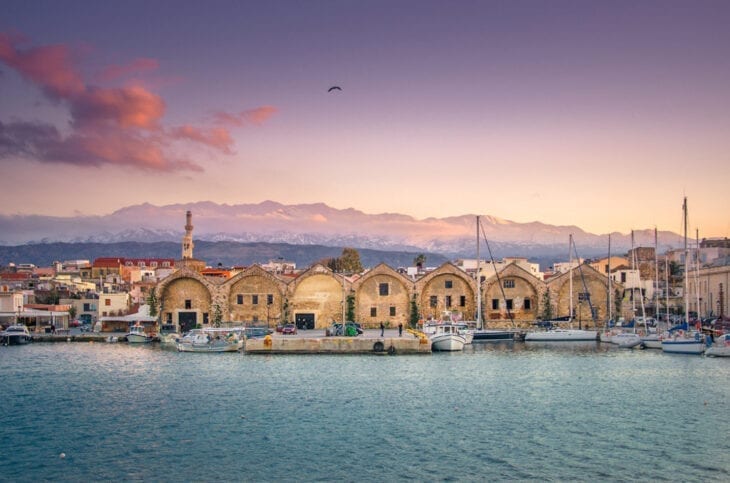
Principal photography of The Two Faces of January began on October 1, 2012, covering locations in Greece, Crete, and Istanbul, which helped to establish the film’s period authenticity. Viggo Mortensen stars as Chester MacFarland, a morally ambiguous con artist. Kirsten Dunst plays Colette, his elegant yet fragile wife. Oscar Isaac portrays Rydal Keener, a tour guide drawn into their dangerous intrigue. The supporting cast includes Daisy Bevan, David Warshofsky, and Prometheus Aleifer.
On IMDb, The Two Faces of January holds a score of 6.2/10, indicating generally favorable reviews. Rotten Tomatoes reports an 80% critic score based on 127 reviews, with an average rating of 6.75/10.
4. Zorba the Greek (1964)
Zorba the Greek, directed by Michael Cacoyannis, is a 1964 drama film based on Nikos Kazantzakis’s 1946 novel The Life and Times of Alexis Zorba. The story follows Basil, a reserved English-Greek intellectual, and Alexis Zorba, a larger-than-life peasant, as they experience life, love, and loss in a small Cretan village.
Zorba the Greek was shot extensively in Crete and key locations include Stavros Beach on the Akrotiri Peninsula, where the famous dance scene was filmed, Chania, Kokkino Chorio, and villages in the Apokoronas region.
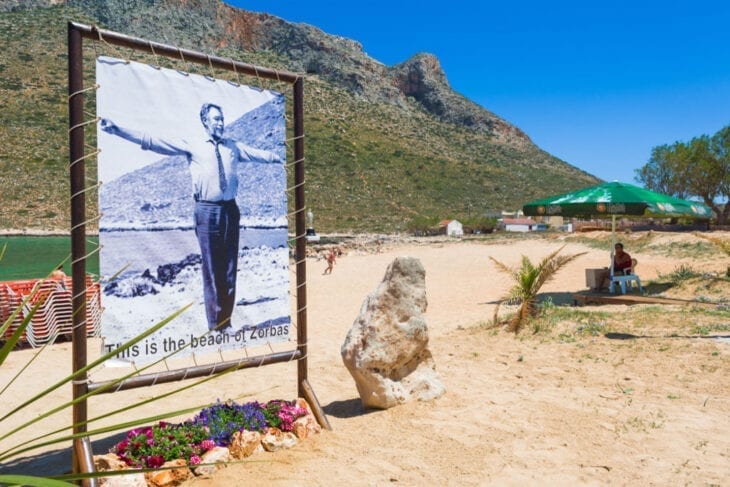
Filming of Zorba the Greek began on March 9, 1964, primarily in Crete to preserve the setting’s authenticity and align with the novel’s tone. Anthony Quinn stars as Alexis Zorba, delivering a legendary performance embodying the character’s zest for life. Alan Bates plays Basil, the introverted writer. Irene Papas portrays the Widow, while Lila Kedrova, in her Oscar-winning role, plays Madame Hortense. Sotiris Moustakas appears as Mimithos.
On IMDb, Zorba the Greek holds a score of 7.6/10, reflecting its enduring popularity. Rotten Tomatoes lists a 90% critics’ score and an 87% audience score. The film won three Academy Awards in 1965, best Supporting Actress (Lila Kedrova), Best Cinematography (Walter Lassally), and Best Art Direction (Vassilis Photopoulos). It was also nominated for Best Picture and Best Actor (Anthony Quinn).
5. Days of ’36 (1972)
Days of ’36, directed by Theo Angelopoulos, is a 1972 Greek dramatic art film and the first part of Angelopoulos’ acclaimed history trilogy. Set in 1936 during the political unrest preceding Ioannis Metaxas’ dictatorship, the story follows Sofianos, a political prisoner accused of murdering a trade unionist who takes a government official hostage to demand his release. Key scenes were filmed in Crete at the Izzedin Fortress in Kalami near Chania.
Days of ’36 is a drama with political allegory and experimental storytelling. Angelopoulos’ distinctive style includes long takes, sparse dialogue, and symbolic imagery, creating a layered narrative that reflects the aesthetic of the unspoken.” Filming took place in 1972 under the constraints of Greece’s dictatorship, with Angelopoulos employing subtle techniques to avoid censorship. Kostas Pavlou plays Sofianos with a restrained intensity, embodying the tension and ambiguity of the character.
The supporting cast of Days of ’36 includes Thanos Grammenos, Giorgos Kyritsis, Petros Zarkadis, Christoforos Neezer, and Toula Stathopoulou, whose understated performances align with the film’s minimalist vision. On IMDb, Days of ’36 holds a score of 6.9/10. While no Rotten Tomatoes score is available, it is widely regarded as a landmark in Greek cinema and a precursor to Angelopoulos’ later masterpieces.
6. The Last Note (2017)
The Last Note (To Teleftaio Simeioma), directed by Pantelis Voulgaris, is a Greek drama film based on the true story of the execution of 200 Greek political prisoners by German occupiers in 1944, as a reprisal for the killing of a German general by Greek partisans. The film was shot on location in Crete, particularly in the prefecture of Chania, where the real events unfolded. Its genre is historical drama, focusing on themes of resistance, sacrifice, and human dignity during World War II. Filming took place in 2017, with meticulous attention to historical accuracy. The leading star is Andreas Konstantinou, who portrays Napoleon Soukatzidis, a resistance fighter and interpreter for the Germans. Other cast members include André Hennicke, Melia Kreiling, and Vassilis Koukalani. On IMDb, the film holds a score of 7.6/10, reflecting its critical acclaim.
7. He Who Must Die (1957)
He Who Must Die (Celui qui doit mourir), directed by Jules Dassin, is a French-Italian drama based on Nikos Kazantzakis’ novel Christ Recrucified. Set in a Turkish-occupied Greek village after World War I, it follows villagers staging a Passion Play that mirrors their rebellion against oppression. The movie was filmed in Crete, specifically in the fictional village of Lykovryssi, with scenes capturing the island’s rugged landscapes and traditional architecture. Its genre is drama, with strong allegorical and religious themes. Filming occurred in 1957, during Dassin’s exile from Hollywood due to McCarthyism. The leading star is Jean Servais as Father Fotis, supported by an ensemble cast including Melina Mercouri, Pierre Vaneck, and Gert Fröbe. On IMDb, it has a score of 7.5/10.
8. Proti Fora Nonos (2007)
Proti Fora Nonos (The Little Greek Godfather), directed by Olga Malea, is a lighthearted comedy-drama about an 11-year-old boy named Alex who travels to Crete to stand in for his father as a godfather during a baptism while navigating local politics and feuding villages. Proti Fora Nonos movie was filmed on location in Crete, capturing its villages and landscapes that enhance the cultural authenticity of the story. Its genre is comedy-drama, blending humor with heartfelt moments about family and identity. Proti Fora Nonos filming took place in 2007. The notable leading star is young actor, Tex Pardue, with supporting roles played by Antonis Kafetzopoulos, Eleni Kastani, and Giorgos Kimoulis. On IMDb, it holds a score of 5.4/10.
9. Summer Lovers (1982)
Summer Lovers, directed by Randal Kleiser, is an American romantic comedy-drama about a young American couple who engage in a love triangle with a French archaeologist while vacationing on the Greek islands. The movie, primarily filmed on Santorini, includes scenes shot in Crete to showcase its landscapes and cultural richness. This romantic comedy-drama examines love, freedom, and self-discovery against Greece’s picturesque backdrop. Filming took place in 1981–1982. Peter Gallagher, Daryl Hannah, and Valérie Quennessen portray the central trio navigating an unconventional relationship. IMDb rates the film 5.8/10, while Rotten Tomatoes assigns a critics’ score of 22% and an audience score of 45%.
10. God Loves Caviar (2012)
God Loves Caviar, directed by Yannis Smaragdis, is a historical biographical film about Ioannis Varvakis, a Greek pirate-turned-businessman who became a prominent figure in the global caviar trade and a philanthropist during the 18th century. The movie was filmed in multiple locations, including Crete, Pylos, Aegina, and Psara in Greece, as well as Astrakhan in Russia. Its genre is adventure, biography, and historical drama, blending action with Varvakis’ inspiring life story. The film was shot in 2012 and features an international cast led by Sebastian Koch as Ioannis Varvakis. Other notable cast members include Catherine Deneuve, John Cleese, Juan Diego Botto, and Olga Sutulova. On IMDb, it has a score of 5.9/10, while Rotten Tomatoes gives it an audience score of 46%, reflecting mixed reviews.
11. 22 Bullets (2010)
22 Bullets (L’Immortel), directed by Richard Berry, is a French gangster-action thriller inspired by real-life events in the Marseille mafia. The film follows Charly Matteï, a retired mobster who survives being shot 22 times and embarks on a quest for revenge. While primarily set in Marseille, parts of the movie were filmed in Crete to enhance its Mediterranean atmosphere. Its genre is thriller and action, with themes of loyalty, betrayal, and vengeance. Filming took place in 2010, with Jean Reno delivering a powerful performance as Charly Matteï. The supporting cast includes Kad Merad, Marina Foïs, and Jean-Pierre Darroussin. On IMDb, it holds a score of 6.6/10.
12. El Greco (2007)
“El Greco” (2007) is a biographical film about the life of the renowned artist Doménikos Theotokópoulos, known as El Greco. El Greco, directed by Yannis Smaragdis, portrays Domenicos Theotokopoulos’s journey for artistic freedom as he moves from Crete to Venice and Toledo, facing the challenges of the Spanish Inquisition. Filming took place in Crete, particularly Heraklion, and in Spain to depict his later years. Released in 2007, the biographical drama explores art, faith, and freedom. Nick Ashdon stars as El Greco, joined by Juan Diego Botto, Laia Marull, Lakis Lazopoulos, and Sotiris Moustakas. The film holds a 6.5/10 IMDb score, has won multiple awards.
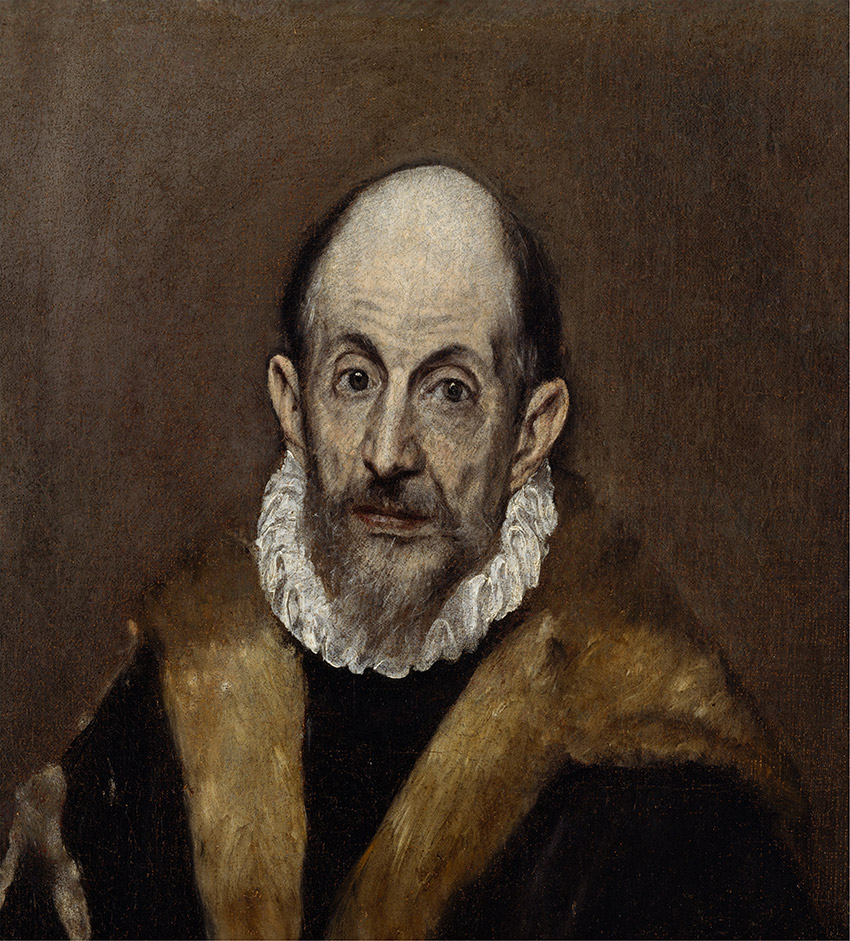
13. The Inbetweeners Movie (2011)
“The Inbetweeners Movie” is a British coming-of-age comedy film based on the TV series “The Inbetweeners.” It follows four friends, Will, Simon, Jay, and Neil, as they take a chaotic holiday to Malia after finishing school. Their misadventures include partying, romance, and embarrassing antics, capturing the humor and awkwardness of adolescence.
The Inbetweeners Movie, directed by Ben Palmer, presents four awkward friends navigating a chaotic post-graduation holiday in Malia, Crete. Inspired by the E4 sitcom The Inbetweeners, it highlights friendship and youthful recklessness through comedic events in a bustling tourist setting. Filming began in May 2011 during Crete’s peak tourist season, with additional work completed off-season for logistical needs. Simon Bird, James Buckley, Blake Harrison, and Joe Thomas returned to their series roles. IMDb gives it a 6.7/10 score, while Rotten Tomatoes rates it 54% from critics and 72% from audiences.
Why is Crete Preferred for Filming?
Crete is a preferred filming destination due to its landscapes, culture, and practical advantages. The island offers a wide variety of settings, including beaches, mountains, historical villages, and ancient ruins, making it ideal for genres ranging from historical epics to modern dramas. Year-round filming is supported by Crete’s mild climate and sunlight, with long daylight hours perfect for outdoor shoots. Economic factors also enhance Crete’s appeal. Greece offers a 40% cash rebate for eligible production expenses, alongside competitive costs. Experienced local crews and production companies ensure reliable services and smooth collaboration. Crete’s accessibility via well-connected air and sea routes further simplifies logistics for film projects.
What is the Importance of Crete’s Geography for Movies?
Crete’s geography combines rugged mountains, fertile valleys, gorges, and beaches, providing natural backdrops. Iconic sites like Samaria Gorge, the White Mountains, and the ruins of Knossos serve as ideal settings for historical epics, adventure films, and dramas. The Mediterranean climate, with sunlight and mild weather, supports year-round filming. Crete’s location at the crossroads of Europe, Africa, and Asia enhances its appeal by showcasing cultural influences from civilizations like the Minoans, Venetians, and Ottomans. Accessibility through international airports in Heraklion and Chania further simplifies logistics.
What Genres of Movies Were Shot in Crete?
Crete’s history and landscapes make it an exceptional setting for films across a variety of genres. Historical dramas often rely on Crete’s ancient landmarks, such as Knossos and traditional villages, to depict eras like the Minoan civilization, Venetian rule, and Ottoman occupation. War films inspired by Crete’s significant role in World War II, particularly the Battle of Crete, focus on the bravery of the Cretan resistance. Crete’s natural features, including gorges, mountains, and ruins, make it a favored location for adventure and mystery films, with plots revolving around treasure hunts, espionage, or explorations of Greek mythology. Romantic dramas in Crete’s environments feature beaches, villages, and sunsets.
What are the most popular locations in Crete for filming a movie?
Crete features iconic filming locations that attract filmmakers for their historical, cultural, and natural significance. Stavros Beach, on the Akrotiri Peninsula near Chania, is one of the most famous spots, known for the legendary Syrtaki dance scene in Zorba the Greek (1964). The ruins of Knossos, near Heraklion, have been featured in films like The Two Faces of January (2014) and are tied to the myth of the Minotaur. The Old Town of Chania, with its Venetian harbor and narrow streets, served as a setting for films like The Two Faces of January (2014), while the rugged countryside and mountains were used in war films such as The 11th Day: Crete 1941 (2005). Malia’s nightlife and modern culture were prominently featured in The Inbetweeners Movie (2011).
Can Tourists Visit Movie Sets in Crete?
Yes, tourists can visit many of these famous movie sets, as several filming locations have become major attractions. Stavros Beach, where Anthony Quinn performed the Syrtaki dance in Zorba the Greek, is a popular destination with crystal-clear waters and a peaceful atmosphere, perfect for swimming and relaxation. Visitors can also explore the ruins of Knossos, featured in The Two Faces of January, or the Old Town of Chania, which has appeared in multiple films. Guided tours around Stavros and Chania often combine visits to filming locations with insights into Crete’s cultural heritage and cinematic history.
What are Greek Films Shot in Crete?
Several notable Greek films have been shot in Crete, drawing from its cultural heritage, landscapes, and historical significance:
- Zorba the Greek (1964): Zorba the Greek is an iconic film based on Nikos Kazantzakis’ novel, which was filmed in locations such as Stavros Beach (Akrotiri Peninsula), Kokkino Chorio, and Chania. It tells the story of an English writer and the larger-than-life Zorba, a Greek man, as they navigate life’s challenges. Featuring Anthony Quinn, Alan Bates, and Irene Papas, it is famous for the Syrtaki dance scene. IMDb rating: 7.6/10.
- El Greco (2007): El Greco is a biographical drama about Domenicos Theotokopoulos (El Greco), a painter born in Crete, the film portrays his early life during Venetian rule before shifting to Venice and Spain. Scenes were shot in Heraklion, including at the Koules Fortress. Directed by Yannis Smaragdis, it stars Nick Ashdon and Juan Diego Botto. IMDb rating: 6.5/10.
- He Who Must Die (1957): He Who Must Die is adapted from Nikos Kazantzakis’ novel Christ Recrucified, the film was shot in Kritsa, one of Crete’s oldest villages. It depicts a village reenacting the Passion Play amid political turmoil. Directed by Jules Dassin, it stars Jean Servais and Melina Mercouri. IMDb rating: 7.5/10.
- The Last Note (2017): The Last Note is a WWII drama about the execution of 200 Greek resistance fighters by German occupiers, this film was partly shot at Izzeddin Fortress near Chania. Directed by Pantelis Voulgaris, it stars Andreas Konstantinou and André Hennicke. IMDb rating: 7.6/10.
- Proti Fora Nonos (2007): Proti Fora Nonos is a comedic film set in Crete, it follows a young boy sent to baptize a child while navigating local traditions. Filming took place in Chania and nearby areas. Directed by Olga Malea, it stars Antonis Kafetzopoulos and Eleni Kastani. IMDb rating: 5.4/10.
What Popular TV Shows Were Filmed in Crete?
Several popular TV shows filmed in Crete showcase its landscapes and cultural heritage. Who Pays the Ferryman?, a BBC drama filmed near Elounda and Agios Nikolaos, follows Alan Haldane, a former soldier returning to Crete after 30 years to confront his past and find belonging. The series integrates local history, folklore, and scenery, with filming at the Ferryman Taverna and Heraklion Airport.
The Lotus Eaters, another BBC series filmed in Agios Nikolaos, tells the story of Erik and Ann Shepherd, a couple managing a taverna while dealing with espionage and psychological drama.
The Greek drama To Nisi, based on Victoria Hislop’s The Island, was shot entirely in Crete and features Plaka, Elounda, Agios Nikolaos, and Spinalonga Island, a former leper colony. It examines love, grief, and resilience among families impacted by leprosy. Directed by Thodoris Papadoulakis and starring Stelios Mainas and Katerina Lehou, it is one of Greece’s most expensive TV productions.
Last updated on January 5th, 2025








